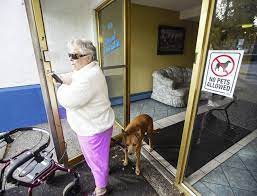 February 2024
February 2024
There is no such thing as a truly pet-free building. Even in communities that prohibit pets in their declaration, there is always some flexibility.
One community had a declaration prohibiting pets but made exceptions for cat owners. At some point, pet owners wanted exemptions for other pets. The corporation attempted to allow cats but not other pets by imposing a rule. The problem was that the corporation was inconsistent in enforcement of their declaration, and also that they created a rule permitting cats to remain in the building which is inconsistent with their declaration.
 Requests to allow dogs on the basis that cats had been allowed lead the corporation to bring itself into compliance. They adopted a rule allowing existing cats to stay but not to be replaced, and no new cats would be allowed. Owners who purchased in the building because of the pet-free stipulation were upset. Cat owners were upset with not being allowed to replace their cats upon their passing. Yet, this was the only way to resolve a past failure to enforce the declaration without demanding that all cats immediately be removed.
Requests to allow dogs on the basis that cats had been allowed lead the corporation to bring itself into compliance. They adopted a rule allowing existing cats to stay but not to be replaced, and no new cats would be allowed. Owners who purchased in the building because of the pet-free stipulation were upset. Cat owners were upset with not being allowed to replace their cats upon their passing. Yet, this was the only way to resolve a past failure to enforce the declaration without demanding that all cats immediately be removed.
 Nobody was happy. Yet the new rule was necessary to move the corporation into a position where the declaration was properly enforced while providing current residents with a reasonable period to become compliant.
Nobody was happy. Yet the new rule was necessary to move the corporation into a position where the declaration was properly enforced while providing current residents with a reasonable period to become compliant.
When a declaration provision prohibiting pets is properly enforced, there are times when a pet must be allowed. Individuals may have legitimate reasons to request a trained service animal accommodation including blindness, deafness and PTSD. Individuals may manage to convince the board that they have disabilities to justify having a pet they believe to be an emotional support animal.
Accommodation requests must be considered on a case-by-case basis to ensure they comply with the Human Rights Code.







